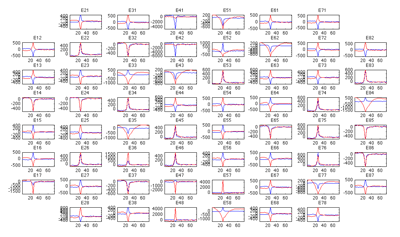Real-Time Spike Detection For Robotic Control
Jose Manuel Ferrández Vicente (Departamento de Electrónica, Tecnología de Computadoras y Proyectos, Universidad Politécnica de Cartagena, Spain), Víctor Lorente Sánchez (Departamento de Electrónica, Tecnología de Computadoras y Proyectos, Universidad Politécnica de Cartagena, Spain), Eduardo Fernández Jover (Instituto de Bioingeniería, Universidad Miguel Hernández, Alicante, Spain)
Detecting neural spike activity in a population of neurons using multiarray electrodes is a basic and relevant task in computacional neuroscience. Most neurons in the brain communicate by their firing action potentials. These brief voltage spikes can be recorded with extracellular microelectrodes arrays, which register the electrical activity of the neural units closer to the electrodes mixed with background noise and artefacts. Our main objective is to use different in-vitro cultures for real-time robotic closed-loop control, so detecting “real” spikes in real-time and reducing the number of false positives in the experiments is crucial. In this work, spike sorting for real-time robotic control by combining different techniques is presented.
The procedure consists initially in filtering recorded spike data to remove specific high and low-amplitude noise and preserve low frequency action potentials, using band-pass techniques. The voltage threshold method detects data points in a signal recording that lie between a minimum and a maximum threshold value. The minimum amplitude threshold discards low amplitude background noise, while the maximum amplitude threshold discards large amplitude artefacts. This method has a low computational cost but it may produce many false positives, especially in signals with a S/N ratio near to 1. The slope of the spikes can be added as a third parameter. However, the user needs a priori knowledge of spike shapes in order to specify appropriate values. Otherwise, inappropriate values may result in the loss of important spike information.
Combining the previous method with a feature analysis is the best way to accurate spike sorting. Feature analysis is based in measuring features of the shape of the spikes, such as spike height and width or peak-to peak amplitude. In general, the more features we have, the better we will be able to reduce false positives. Another helpful method is principal component analysis (PCA). The idea behind PCA is to find an ordered set of orthogonal basis vector that capture the directions in the data of largest variation. Depending of the data, many components can be obtained, but only the first three are the most important. The first component (Figure 1) should have a spike-like form. The second component may also have spike-like form but is an offset of the first one. Finally, all these methods can be combined with different kinds of histograms, like an interspike interval histogram. However, this is an ad-hoc technique and again, some information of the data set is required.
Unifying these spike sorting methods in a single one results in an accurate way of detecting real spike data, reducing false positives to the minimum with a reasonable computational cost and in real time. Nevertheless, a previous study of the spontaneous activity of the cell culture has to be done in order to find the appropriate parameters for each method.


 Latest news for Neuroinformatics 2011
Latest news for Neuroinformatics 2011 Follow INCF on Twitter
Follow INCF on Twitter
